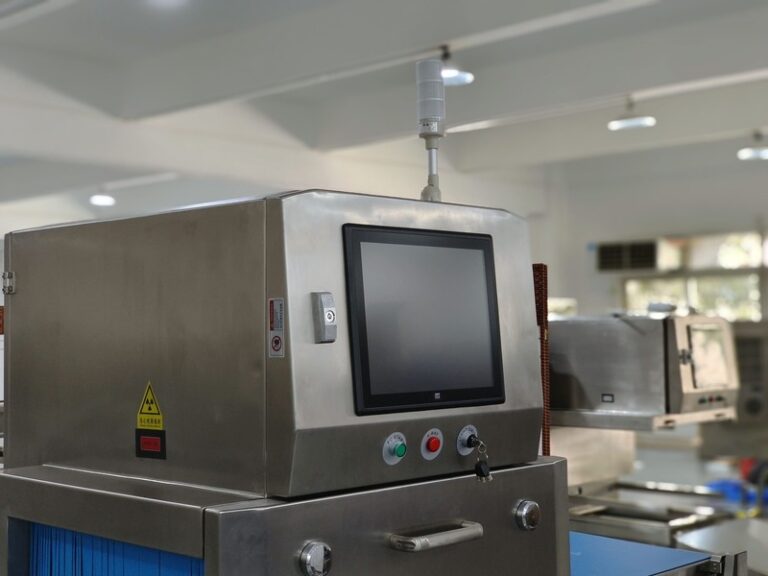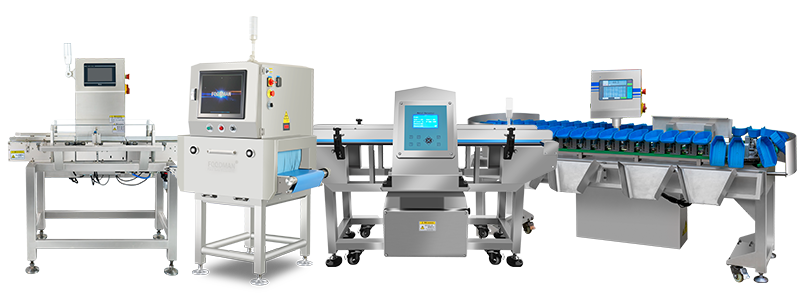Introduction
Foreign object detection is critical in various industries, ensuring product safety and quality. Companies commonly use X-ray inspection systems and metal detectors for this purpose. In this article, we will delve into the intricacies of both methods, exploring their principles, processes, benefits, and limitations.
Understanding X-Ray Inspection
X-Ray Technology and Principles
X-Ray Inspection Process
The process of X-ray inspection involves the following steps:
Step 1: The operator places the product on a conveyor belt or within a chamber for inspection.
Step 2: The product emits X-ray radiation.
Step 3. The product allows the X-rays to pass through and records their interactions with the internal structures.
Step 4: Sophisticated algorithms analyze the recorded data to detect the presence of foreign objects.
Step 5: If the system detects a foreign object, it triggers an alert to initiate further actions.
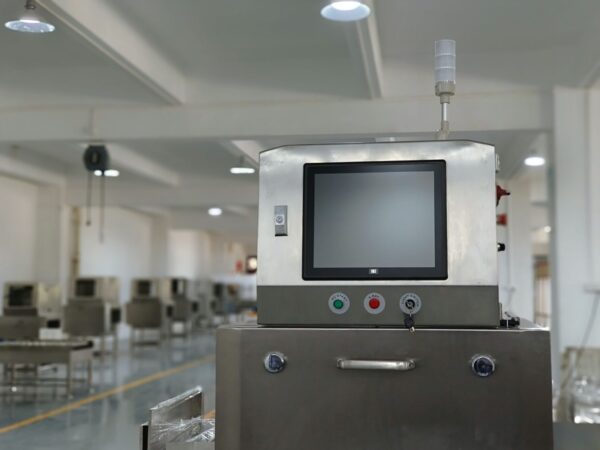
Benefits of X-Ray Inspection System
Enhanced Detection Capabilities: X-ray inspection can identify many foreign objects, including metals, glass, stones, and plastics.
Non-Destructive and Non-Invasive: X-ray inspection does not damage or alter the inspected product, making it ideal for quality control.
Versatility in Detection: X-ray inspection can detect foreign objects in various industries, including food processing, pharmaceuticals, automotive, etc.
Limitations of X-Ray Inspection
While X-ray inspection is a powerful technology, it also has its limitations:
Cost Implications: Implementing X-ray inspection systems can be relatively expensive, requiring initial investment and ongoing maintenance costs.
Safety Considerations: X-ray radiation poses potential risks, requiring proper safety measures and adherence to regulatory guidelines.
Product and Material Limitations: X-ray inspection may not work for all products or materials, especially those with dense or overlapping parts.
Exploring Metal Detectors: Unveiling the Technology, Advantages, and Limitations
Metal detectors are necessary tools in various industries, providing efficient and reliable detection of metallic objects. Metal detectors offer multiple applications, from conveyor-based systems to handheld devices. This comprehensive article will explore metal detectors’ technology, types, advantages, and limitations.
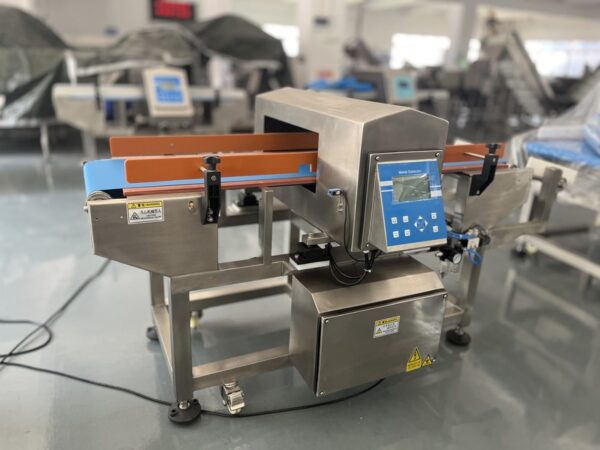
Metal Detector Technology
Metal detectors rely on electromagnetic fields to detect the presence of metallic objects. When a metal object passes through the detector’s electromagnetic field, it disturbs the area, triggering an alert signal.
Types of Metal Detectors
There are different types of metal detectors commonly used across industries:
Conveyor-based Food Metal Detector: Production lines integrate these detectors to scan products for metal contamination.
Security checkpoints commonly use walk-through metal detectors to scan individuals for metallic objects.
Handheld Metal Detectors: Compact and portable devices used for localized metal detection.
Advantages of Metal Detectors
Metal detectors offer several benefits in foreign object detection:
Cost-Effectiveness: Metal detectors are generally more affordable compared to X-ray inspection systems.
High-Speed Detection: Metal detectors can rapidly scan products, making them suitable for high-speed production lines.
Easy Integration: Conveyor-based metal detectors seamlessly integrate into existing production lines, enabling continuous scanning without interrupting workflow. Their compatibility with conveyors streamlines the detection process, enhancing productivity.
Limitations of Metal Detectors
Metal detectors also have some limitations
Limited Detection Sensitivity for Non-Metallic Objects
Metal detectors primarily detect metallic objects and may have limited sensitivity to non-metallic foreign objects.
False Positives and False Negatives
Metal detectors can generate false alarms or miss specific metallic contaminants, requiring additional verification steps.
Specificity to Metal Contaminants
Designers create metal detectors to detect metal contaminants, and their effectiveness may vary for different types of metals.
Comparative Analysis: X-Ray Inspection vs. Metal Detectors
In foreign object detection, two prominent technologies stand out: X-ray inspection and metal detectors. Each method offers unique capabilities and advantages, making them suitable for different applications and industries. This analysis compares X-ray inspection and metal detectors, focusing on accuracy, sensitivity, applications, throughput, productivity, and safety.
Here is a brief comparison table for the metal detector and the X-ray inspection
| Metal Detector | X-ray Foreign Object Detection | |
|---|---|---|
| Principle | Detecting through electromagnetic induction or metal conductivity | Seeing the internal structure of objects through the X-ray principle |
| Object of Detection | Metals and conductive objects | Metals, glass, stone, plastic, etc. |
| Detection Method | Surface detection | Non-destructive internal detection |
| Sensitivity | Can detect tiny metal foreign objects | Can detect tiny metal foreign objects |
| Detection Speed | Faster | Slower |
| Detection Range | Suitable for metals and conductive objects | Suitable for various objects |
| Safety | Safe | X-ray usage requires strict control |
| Price | Lower price | Higher price |
| Application | Ideal for metal products production and processing | Eligible for food, medical, chemical, and other fields |
Note: The advantages and disadvantages in the table are not absolute and depend on various factors such as brand, model, and application scenario.
Detection Accuracy and Sensitivity
Comparative Analysis of Detection Capabilities
Sensitivity to Different Types of Foreign Objects
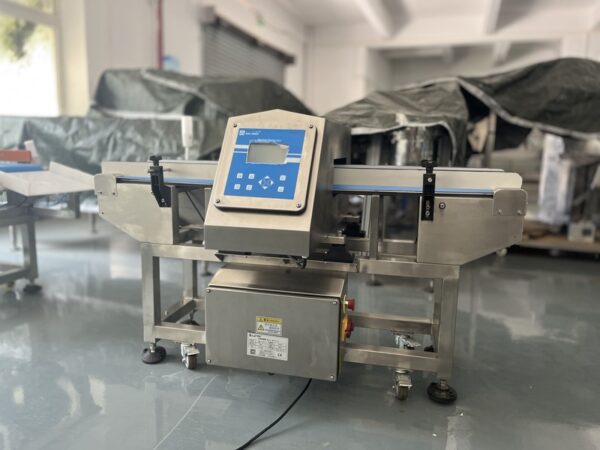
Applications and Industries
Suitable Applications for X-Ray Inspection
X-ray inspection system finds extensive applications across industries that demand precise detection and quality control. It is widely used for food processing, pharmaceutical manufacturing, automotive production, and electronics assembly. X-ray inspection ensures compliance with industry regulations, safeguards product integrity, and prevents contamination risks.
Industries Benefiting from Metal Detectors
Metal detectors are crucial in industries where rapid and reliable metal detection is paramount. The food industry commonly employs them to prevent metal contamination in processed goods, ensuring food safety. Additionally, metal detectors contribute to security and public safety in airports, stadiums, and high-security facilities.
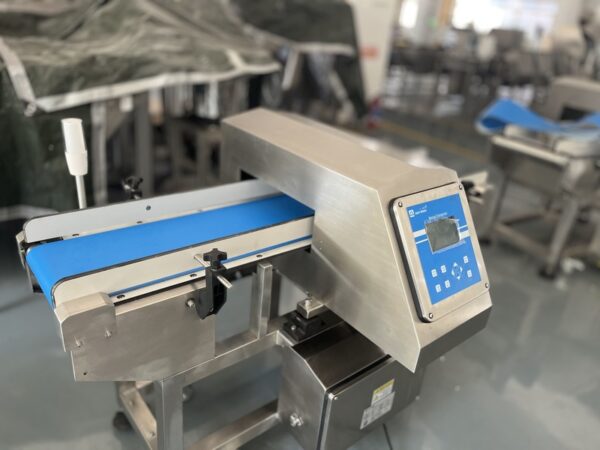
Throughput and Productivity
Comparison of Detection Speeds
Metal detectors offer high-speed detection capabilities, ideal for fast-paced production lines or security checkpoints. They can swiftly scan products or individuals, minimizing processing delays and maintaining productivity.
X-ray inspection is accurate, but it takes longer. This is because it analyzes internal structures, which can slow down the process. This is especially true in busy places. However, technology’s development has dramatically improved the speed of X-ray machines, making them even faster than conveyor metal detectors.
Impact on Production Line Efficiency
Both metal detectors and x-ray inspection systems can integrate into production lines to provide seamless detection without disrupting workflow. But the environment may impact the metal detectors more. The sensitivity will not be stable if the magnetic field changes, vibration, and other disturbances during manufacturing.
Safety Considerations
Radiation Safety in X-Ray Inspection
X-ray inspection systems utilize radiation technology, raising safety concerns. However, manufacturers implement stringent safety measures to minimize radiation exposure risks. Compliance with regulatory guidelines and regular equipment maintenance ensures safe operation and protection of workers and consumers.
Minimizing Risks with Metal Detectors
Metal detectors pose minimal safety risks as they do not involve radiation. Operators should follow proper operating procedures and adhere to safety guidelines to ensure optimal performance. Regular calibration and maintenance help maintain accuracy and mitigate false positives or adverse risks.
Choosing the Right Solution: Factors to Consider
It would be best if you considered several factors when deciding between X-ray inspection and metal detectors.
Product Characteristics and Material Compatibility
Cost Considerations and Budget Constraints
Evaluate the initial investment, ongoing maintenance costs, and the overall budget for implementing a foreign object detection system. X-ray inspection systems typically involve higher upfront costs due to the advanced technology and safety measures involved. Metal detectors are cheaper and popular for industries with limited budgets.
Regulatory Compliance and Industry Standards
Assess the rules for your industry, like food safety, and see if each technology can meet these standards. X-ray inspection and metal detectors have regulations and certifications. It’s essential to know how they fit with your industry’s needs.
Conclusion
In the realm of foreign object detection, both X-ray inspection and metal detectors play vital roles. X-ray inspection offers superior detection capabilities and versatility but has higher costs and safety considerations. Metal detectors, on the other hand, provide cost-effective and high-speed detection but may have limitations in sensitivity. Selecting the right solution requires careful evaluation of specific industry requirements, product characteristics, and budget constraints.
Frequently Asked Questions (FAQs)
1. Is X-ray inspection safe for food products?
X-ray inspection is safe for food products when implemented and maintained according to regulatory guidelines and industry standards.
2. Can metal detectors detect non-metallic foreign objects?
Metal detectors primarily detect metallic foreign objects and may have limited sensitivity to non-metallic contaminants.
3. What are the maintenance requirements for X-ray inspection and metal detectors?
Both X-ray inspection and metal detectors require regular maintenance to ensure optimal performance. X-ray machines need safety checks and calibration, while metal detectors require sensitivity adjustments and cleaning.
4. Are there any legal requirements for foreign object detection in industries?
Various industries have legal requirements for foreign object detection to ensure product safety and compliance. For example, the food industry must adhere to food safety regulations that mandate implementing foreign object detection systems. Depending on their products and processes, other sectors may have specific rules or standards.

